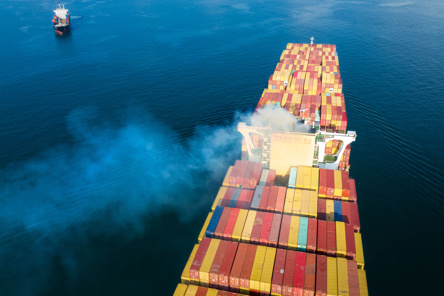WHAT’S THE LATEST
Effective January 1, 2024, the European Union Emissions Trading System (EU ETS) is now covering CO2 emissions from all large ships (of 5,000 gross tonnage and above), thereby imposing an annual absolute ceiling on emissions of specific greenhouse gases.
The official announcement of the EU Commission notes that any ship entering EU ports, regardless of the flag they fly, will fall under this new mandate.
The system, in particular, covers:
- 50% of emissions from voyages starting or ending outside of the EU (allowing the third country to decide on appropriate action for the remaining share of emissions).
- 100% of emissions that occur between two EU ports and when ships are within EU ports.
WHY IT MATTERS
The addition of the EU ETS will result in emission surcharges, which could have a notable impact on shipping expenses. Furthermore, it is expected that the volatility of the European Union Allowance (EUA) traded in the ETS will rise with the introduction of the updated regulations.
- Carriers, such as Cosco, Hapag-Lloyd, Maersk, MSC and others, have already announced surcharges.
THE BIGGER PICTURE
The EUA applies for all shipping companies.
1 ton of reported CO2 = 1 European Union Allowance
- The price of EUAs fluctuates on exchanges such as ICE, EEX and Nasdaq, and shipping companies are responsible for purchasing these allowances to cover their emissions.
- The emissions surcharge applied to customer shipping costs will be adjusted quarterly based on the average EUA price during the preceding quarter, ensuring transparency and accountability.
- Through a public index for the emissions surcharge, all customers will be informed about the impact of EUA price by fluctuations in their shipping costs.
The EU is gradually introducing new carbon pricing and is expected to increase through 2026.
- In 2024, companies must submit allowances for 40% of their verified emissions.
- In 2025, companies must submit allowances for 70% of their verified emissions.
- From 2026 onwards, companies must submit allowances for 100% their verified emissions.
Go Deeper: For more information on the EU ETS and climate neutrality ambitions goals for 2024, visit https://climate.ec.europa.eu/eu-action/eu-emissions-trading-system-eu-ets_en
EXPECTED CHANGES IN 2024
To tackle the attendant challenges, we expect that the following changes in 2024 are likely:
- Increase in freight rates including the cost of EUA.
- Ambiguity in rate levels due to carriers’ different calculation methodologies (See List of Carriers announcing surcharges on ETS).
- Uncertainty in shipping schedules and transit times, caused by the optimization of shipping lines to optimize routes to minimize the emissions and carbon footprints.
- Higher retail prices due to the financial implications of the EU ETS.
- Flexible business models and innovative logistics solutions proposed by the 3PLs to adapt the evolving ocean freight landscape under the EU ETS.
- Long-term environmental benefits and cost-effective solutions generated by the investment in clean technologies.
HOW TO PREPARE
- Re-measure the consolidated expense of each voyage after overlaying the EUA compliance cost and rationalize the space and shipment arrangement.
- Do research on the EUA market dynamics and develop strategies for your company’s forecasted freight demand.
- Adapt your supply chain by re-evaluating sourcing locations and distribution networks to reduce emissions and save cost.
We are continuing to monitor the situation closely and provide timely updates to those impacted.
THE BOTTOM LINE
The best thing to do with uncertainty is prepare for it. Start planning now to ensure your company is best positioned to react appropriately. SEKO is here to help.
If you have any questions, please reach out to your SEKO representative, or email us at hello@sekologistics.com.





